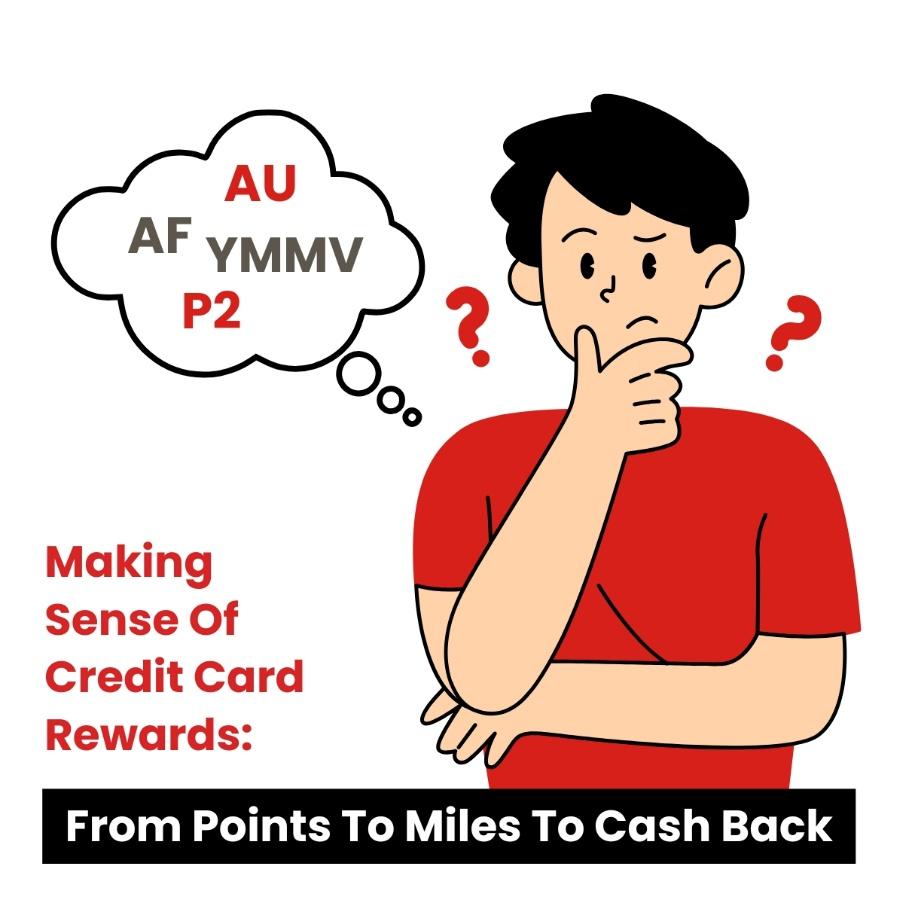Picture this: you’re standing at the checkout in a Toronto grocery store. The cashier casually asks, “Would you like to pay with your points?” You pause, card in hand, wondering: How many points do I even have? What are they worth? Should I save them for travel? Or just get cash back instead?
If this feels familiar, you’re not alone. Canadians love credit card rewards, but few truly understand how they work. With dozens of programs offering points, miles, or cash back, the terminology can feel overwhelming. Banks and issuers often use these terms interchangeably, yet the differences matter—especially when your rewards can mean the difference between a free flight or just a few dollars off your bill.
In this guide, we’ll walk through credit card rewards explained in simple language. We’ll decode what points, miles, and cash back really mean, explore top Canadian programs like Aeroplan and Marriott Bonvoy, and show you how to choose cards that complement your lifestyle.
What Are Credit Card Rewards, Really?
At their core, credit card rewards are a rebate system. Every time you swipe or tap your card, the issuer earns money from merchants. A portion of that revenue is given back to you in the form of points, miles, or cash back.
The catch? Each type of reward works differently, and each program values them uniquely. That’s why 100,000 Aeroplan points isn’t the same as 100,000 Marriott Bonvoy points—and why some Canadians swear by cash back cards instead.
Let’s decode each category.
Understanding Points: Flexible but Confusing
Points are the most common reward currency in Canada. They are versatile, but the downside is that their value isn’t always obvious.
How Points Work
When you use a points card, you earn rewards based on your spending. For example, the Amex Cobalt Cash Back (which is technically a points card disguised as cash back) gives 5 points per $1 on dining and groceries. Each point is worth about 1¢, so that’s a 5% return.
Other cards, like the Amex Gold Credit Card, allow you to transfer points to travel partners like Aeroplan or Marriott Bonvoy, where their value can increase significantly.
Key Canadian Point Programs
- Membership Rewards (American Express) – Flexible and transferable to Aeroplan, Marriott Bonvoy, and more.
- Aeroplan – Canada’s flagship airline program, tied to Air Canada and its Star Alliance partners.
- Marriott Bonvoy – Popular with travellers who want free hotel nights.
- Bank reward systems (TD Rewards, RBC Avion, etc.) – Proprietary programs that offer travel portals or statement credits.
The Pros of Points
- Flexible redemption options.
- High upside if transferred strategically (e.g., Amex → Aeroplan → Business Class flights).
- Great for Canadians who travel frequently.
The Cons of Points
- Confusing valuations.
- Devaluations can occur (points suddenly worth less).
- Not ideal if you prefer simplicity.
Understanding Miles: Travel Lovers’ Currency
Miles are essentially travel-specific points. They are designed to be redeemed for flights, upgrades, and sometimes hotels or car rentals.
How Miles Work
When you earn miles on a card like the TD First Class Travel Visa, you accumulate rewards tied to travel portals or airline partners. For example, TD Rewards Points can be redeemed through Expedia for TD at a fixed value.
Aeroplan Miles (now simply “Aeroplan Points”) remain the most recognized in Canada. A Toronto-to-Vancouver round-trip can cost anywhere from 12,500 to 25,000 Aeroplan points, depending on availability and demand.
The Pros of Miles
- Can unlock incredible value on long-haul flights.
- Access to premium cabins and perks like lounge passes.
- Often come with travel insurance benefits.
The Cons of Miles
- Limited to travel-related redemptions.
- Complex booking systems with fluctuating rates.
- Blackout dates or availability issues.
For Canadians who love to explore, miles can be life-changing. For those who rarely travel, they may not be as useful as cash back.
Understanding Cash Back: The Straightforward Choice
Cash back is exactly what it sounds like—your spending earns you money back, credited directly to your statement or deposited into your account.
How Cash Back Works
Take the TD Cash Back Visa. It offers up to 3% cash back on groceries, recurring bills, and gas. That means spending $500 on groceries earns you $15 back—simple, transparent, and easy to track.
The Tangerine Credit Card Cash Back is another Canadian favourite because you can choose two categories (like dining or transportation) to earn extra rewards, with a third category available if you deposit into a Tangerine Savings Account.
The Pros of Cash Back
- Simple and transparent—no complicated charts.
- Flexible—you can use rewards however you want.
- Perfect for Canadians on fixed incomes or who don’t travel often.
The Cons of Cash Back
- Less potential upside than points or miles.
- Some cards come with annual fees.
- Rewards may be capped monthly or annually.
For many Canadians, cash back cards are the best option because they directly offset household expenses.
Comparing Points, Miles, and Cash Back
So which system is best? The answer depends on your lifestyle and spending habits.
- If you want maximum travel perks, go for miles or transferable points like Aeroplan and Amex Membership Rewards.
- If you prefer simplicity, a cash back card like the TD Cash Back Visa or Tangerine is ideal.
- If you want flexibility, a hybrid card like the Amex Cobalt Cash Back offers the best of both worlds.
Credit Card Rewards Explained
At the end of the day, credit card rewards are about more than jargon. Points, miles, and cash back are simply different languages of the same promise: giving you value back for every dollar spent.
The trick is to know your habits, choose the right card, and stay disciplined enough to pay off balances monthly. Do that, and rewards stop being a mystery—and start becoming a powerful financial tool.
Want to put this knowledge into action? Don’t just sign up directly—start every new card application through Great Canadian Rebates. That way, you’ll stack your sign-up bonuses with extra cash back. It’s the smartest way to make every swipe count.


